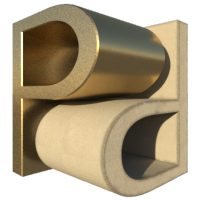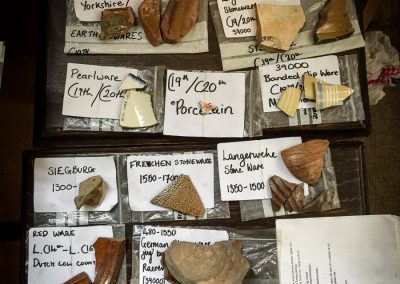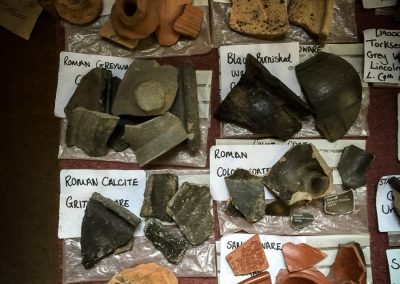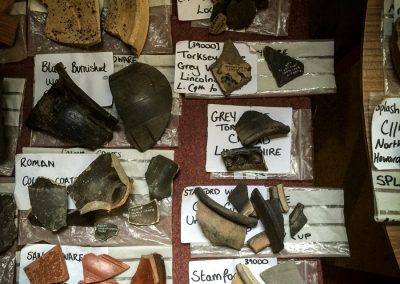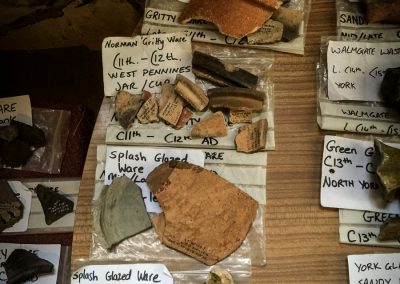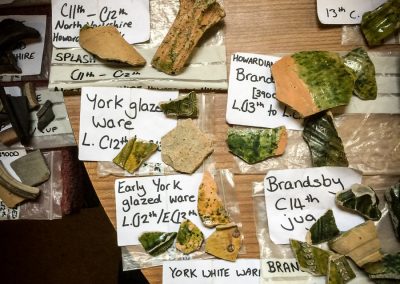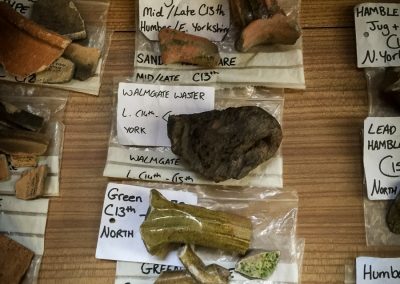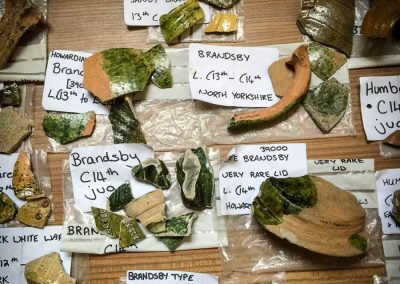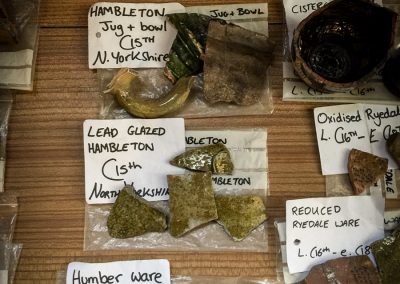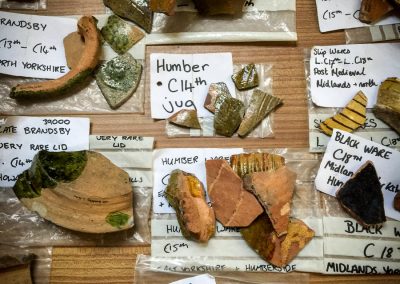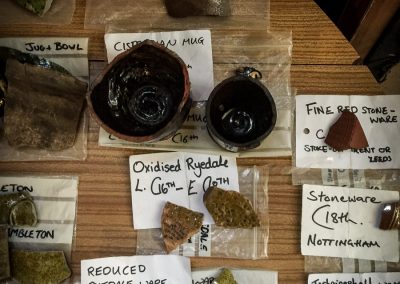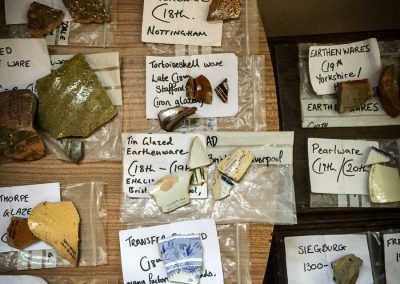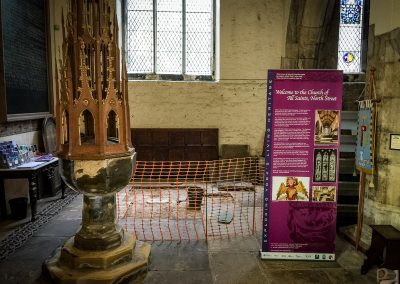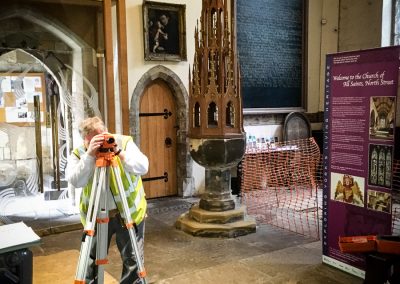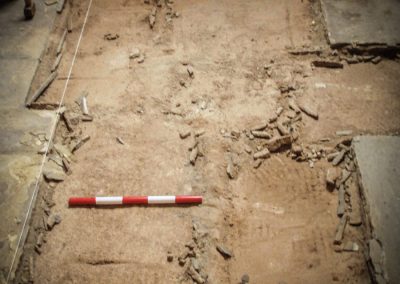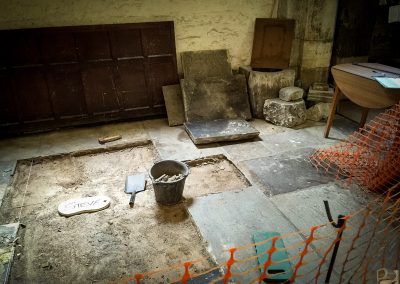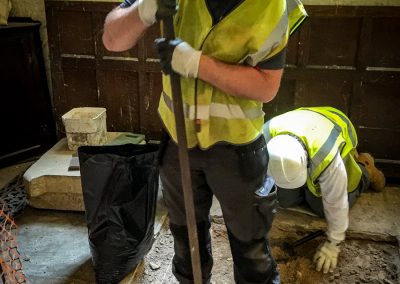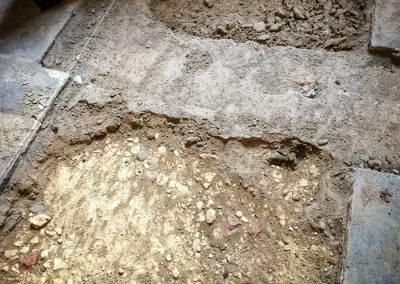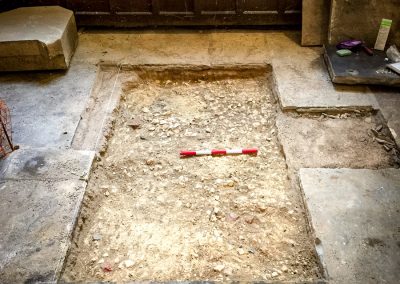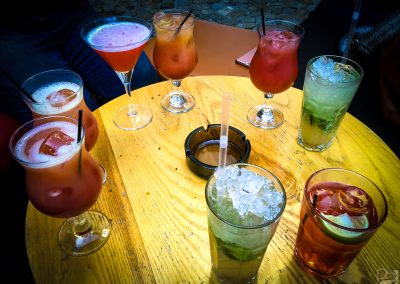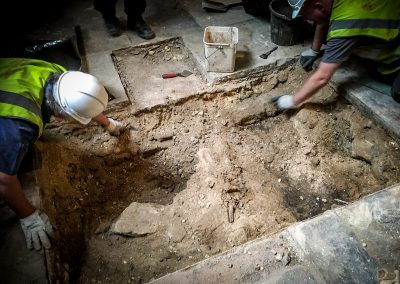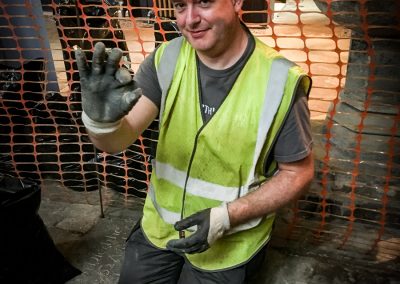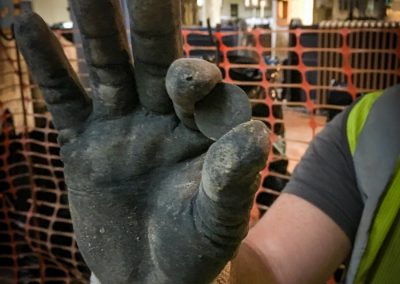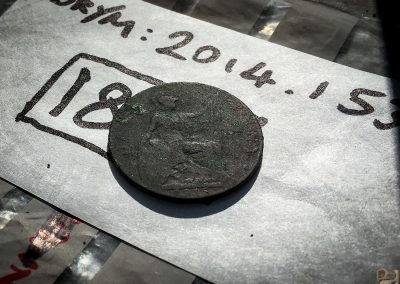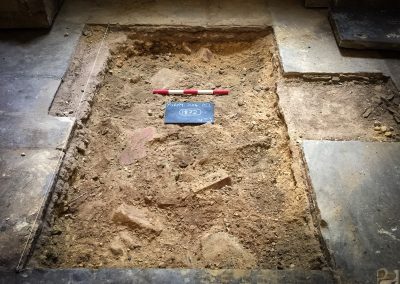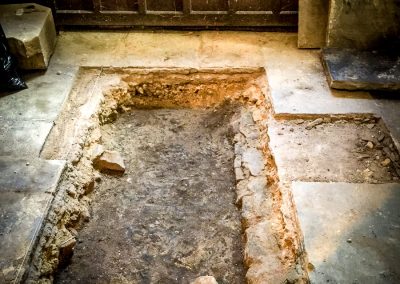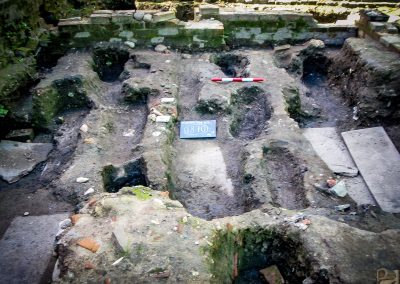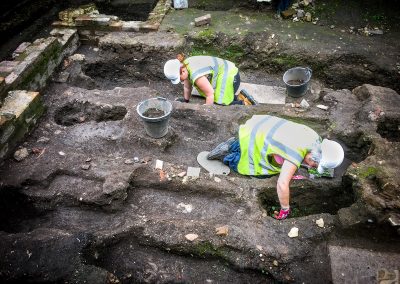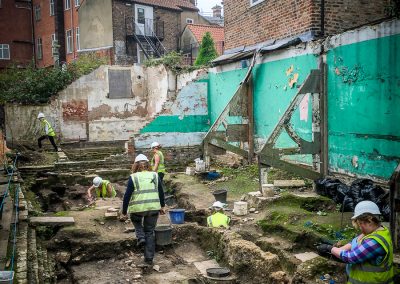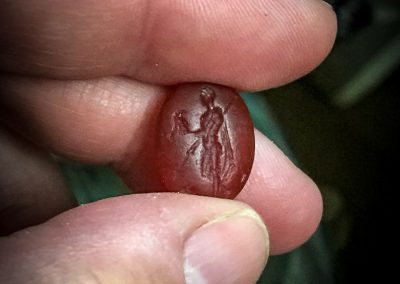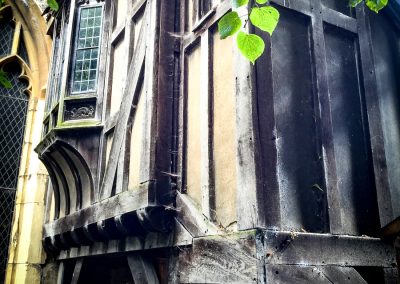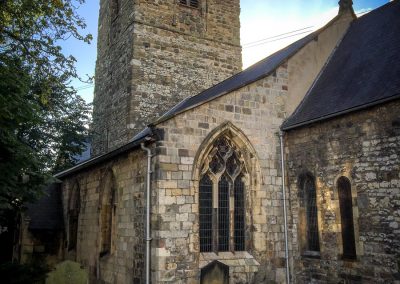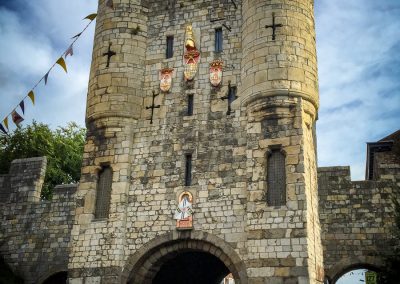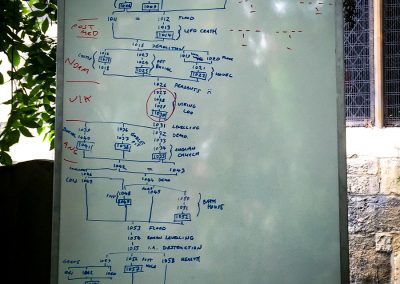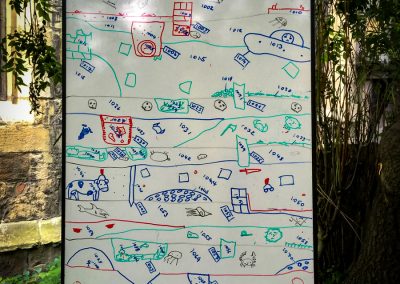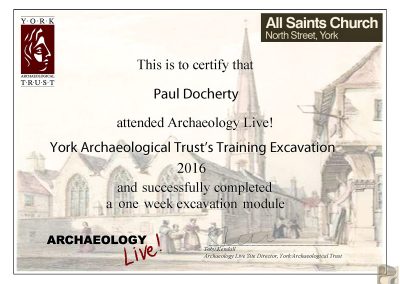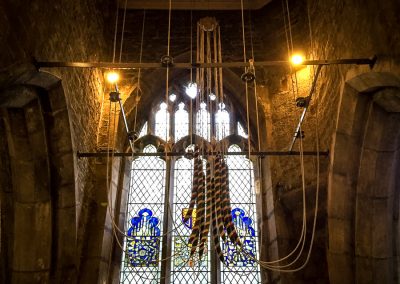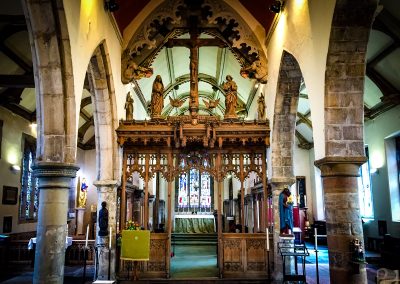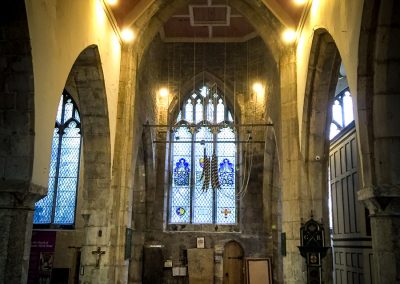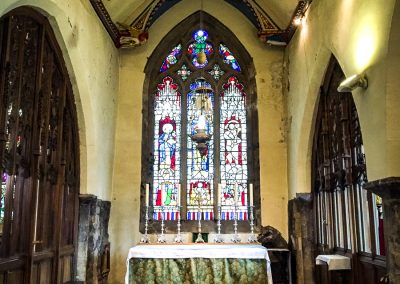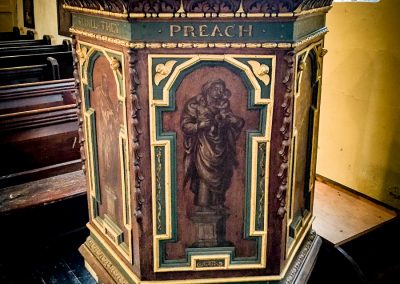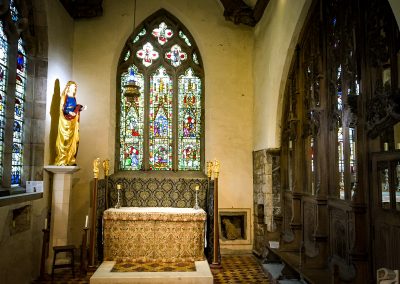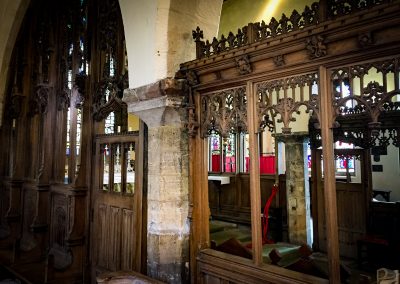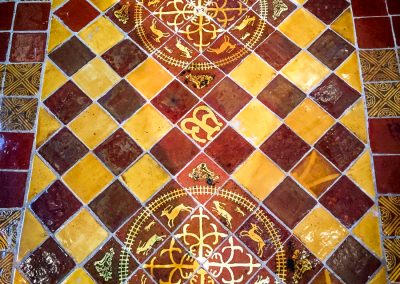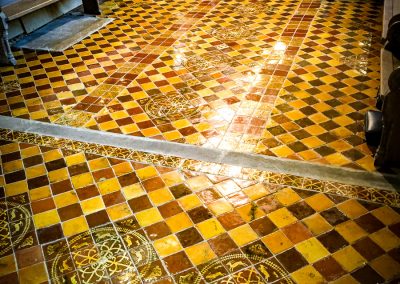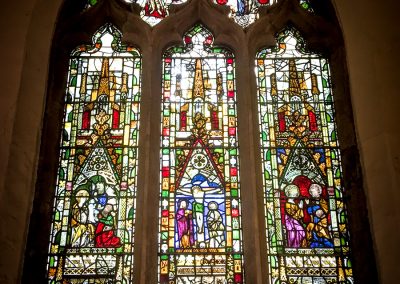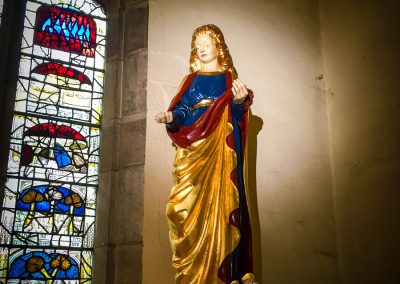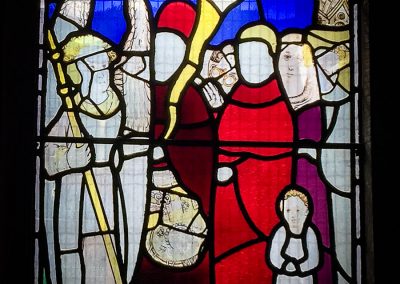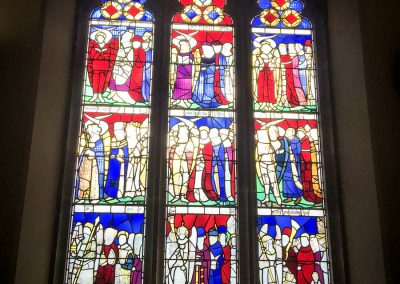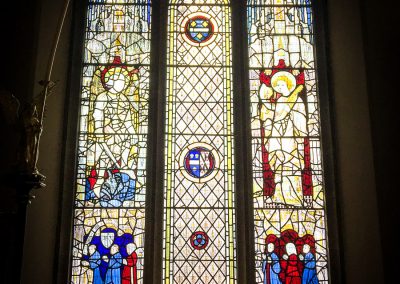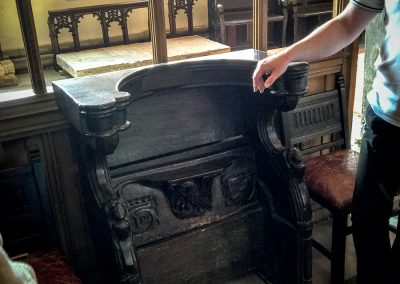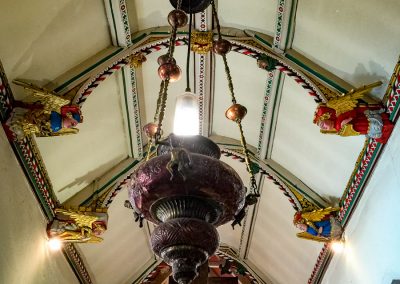I decided to undertake this course in order to expand on my formal excavation practice. Attendance on the course was also a pre-requisite to the end of year Post Excavation Course which I was very interested in doing as it looks more into the documentation and report writing phase.
Location
The location for this dig was All Saints Church, North Street, York. The dig site was NW of the church and until recent years had been a few buildings grouped together in a row. These had been demolished prior to the first excavations taking place ready for redevelopment. Prior to their construction the site had been a cemetery. Besides the burial plots which are early 19th century there is evidence of several earlier workshops from antiquity. The archaeology goes back through medieval, Viking to Roman.
YAT uses a Single Context Recording System that requires an understanding of what it is that you are digging, which in turn should help you to learn more quickly how to dig. Most excavations in Britain use the same basic techniques and equipment, so the skills acquired during the excavation can be easily transferred to other sites.
Time was divided equally between three tasks:
- Basic digging techniques – trowelling, mattocking, shovelling etc.
- Site recording – planning, levelling, section drawing and context description.
- Finds – washing, sorting and environmental sample processing.
As the dig is a training course each day included a seminar session on a topic with particular relevance to the site. I have not included any skeleton shots for this diary as some of them may have living relatives.
Further information regarding YAT Training courses can be found through the following links:
Web: http://archaeologylive.org/
Facebook: http://www.facebook.com/groups/ArchaeologyLive/ or https://www.facebook.com/ArchaeologyLivePage
Twitter: https://twitter.com/ArchaeologyLive
e-mail: trainingdig@yorkat.co.uk
All Saints Church
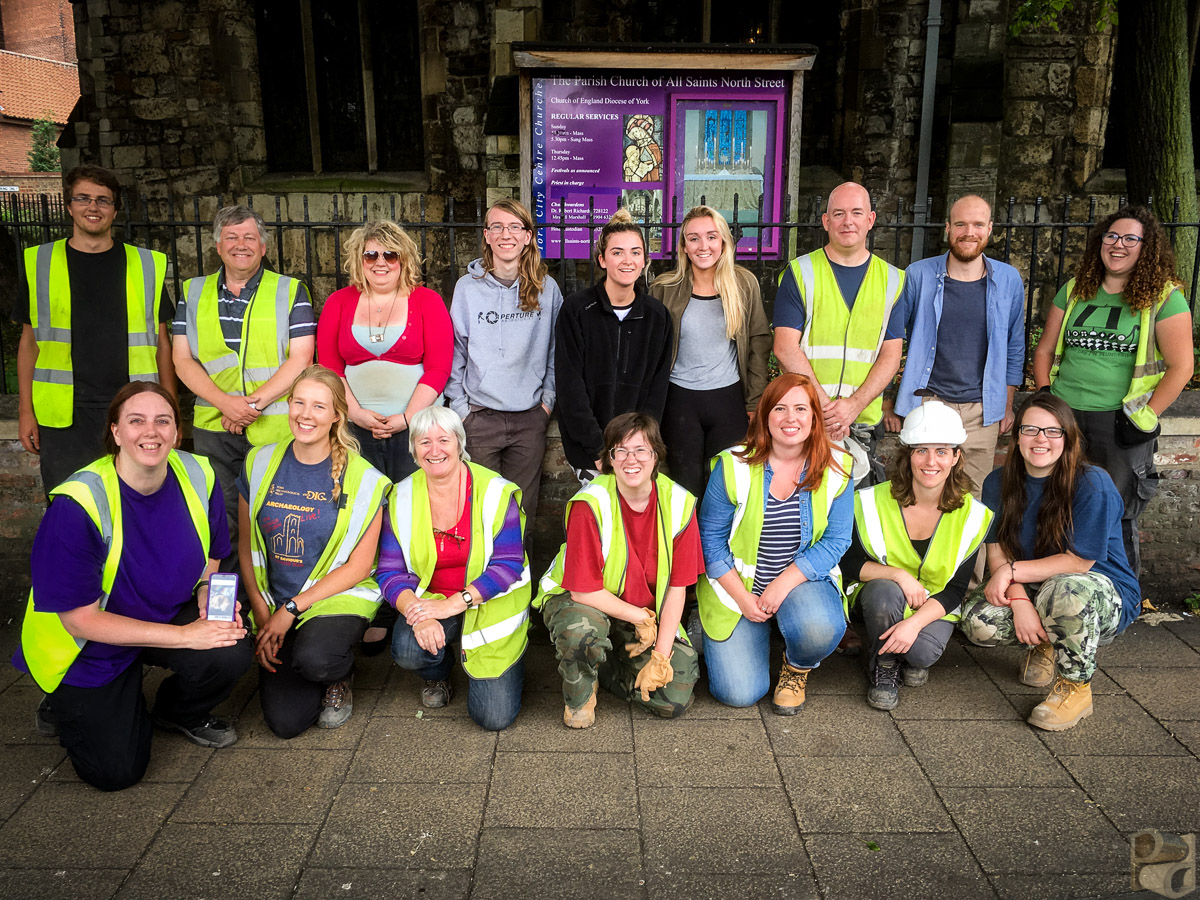
Day 1 (Monday 5th September 2016)
The morning was taken up by a general introduction and a lecture on the site and health and safety. As the site is an urban setting everyone was required to wear a hard hat visibility vest and steel capped boots. This was followed by an introduction to excavation techniques which I was already familiar with from previous digs however there were some subtle differences which I needed to be aware of. Before lunch I had the opportunity to do some site surveying and planning. The afternoon was taken up with small finds cleaning and more context recording.

Day 2 (Tuesday 6th September 2016)
Overcast day but seriously warm. I ran through some level measuring and site planning in the morning but the afternoon was given over to a seminar on pottery dating. And yes, it was a lot more interesting than you would think! Afterwards we did some further finds washing as there was a backlog; but then there always is on a dig!
Day 3 (Wednesday 7th September 2016)
This morning was spent in the YAT Conservation Lab looking at how finds are processed once they have been excavated bagged and tagged. The lab handles artefacts from several museums and excavations and part of their remit is to stabilise finds so that they stop decaying. We looked at the processes involved in conserving a sword which was heavily oxidised, a musket which had been underwater, and a late medieval wineglass which had damage to its base. We also looked at the incredibly long and involved process of treating wooden objects.
After lunch we were back at All Saint’s Church. The font inside the church was going to be relocated soon so we had an opportunity to excavate the area it was going to be moved to. This involved lifting a few flagstones, some of which were old tombstones and then breaking through into the surface underneath ready for excavation. The main find was the glove of the workman who had laid the flagstones in the very recent past.
At the end of the day a few of us went for cocktails as we were in York, and it was happy hour! what a surreal world archaeology is! Not likely to be on another dig where this would happen so…
Day 4 (Thursday 8th September 2016)
Worked mainly inside the church during the morning until the church service began then took time out to do some finds cleaning while we waited for it to finish. During the afternoon, we broke through the hardcore and rubble to a black layer where we found a 1915 halfpenny. So, we know this layer is after that date. No holy grail in sight yet!
The late afternoon seminar allowed us to examine previous finds from the site including Viking and Roman combs, buckles, clasps, and even Viking coprolites. We were told about the ‘Lloyds Bank coprolite’ and what it told us about 9th century Viking health and diet. One of the nicest finds was an engraved gemstone from a Roman intaglio ring.
In the evening, we were given a guided tour of the southern city wall area with a focus on selected building archaeology. The visit to St Mary Bishophill Junior gave us a good example of how very old buildings were constructed or extended by using material from even earlier buildings. The bell tower for instance shows material from the roman period. It was a good walk and ended up in the pub, naturally!
Day 5 (Friday 9th September 2016)
The day began with a full tour of the church by the church warden, Dr Robert Richards, who showed us all the things you tend to miss when looking around the church. Check out the stained-glass photographs and see if you can spot the man wearing 15th century spectacles.
After that we worked a little more on the area inside the church mainly recording the brickwork. I took some time to do my own photogrammetry survey of the whole site for my research and will be posting the results on this website once I have processed the data.
The latter half of the afternoon was taken up by Arran giving us a seminar on stratigraphy where we made up a completely fanciful history and worked out the Harris matrix for it. This was an extremely useful and fun exercise showing how complex albeit logical Harris matrices can be.
The day finished at 5pm and I headed off toward York train station to travel back home, via the station bar!
All Saints Church Interior
After finishing my training dig with Yorkshire Archaeological Trust and I can safely say it was very informative and extremely well organised. The team were pleasant and very helpful. I would like to mention that Arran, Becky and Matt went above and beyond and I hope to see them again in the future.
I had originally planned to return later in the year for the post excavation course but unfortunately personal circumstances meant that I was unable to at that time, however I do hope to take part in one of the future courses.

